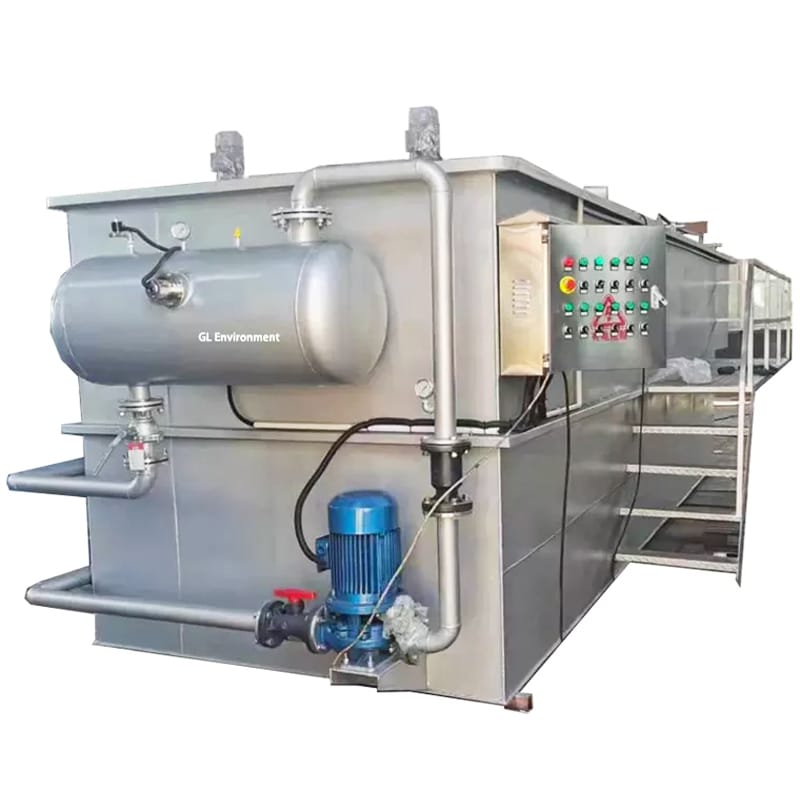Domestic sewage is an unavoidable by-product of daily life. Understanding its characteristics, treatment methods and impact on the environment is essential for the protection of water resources and the ecological environment.
What is Domestic Wastewater?
Domestic wastewater is water discharged from residential areas, including wastewater from kitchens, bathrooms, and laundry activities. This wastewater typically contains organic matter, nutrients such as nitrogen and phosphorus, pathogens, and a variety of household chemicals.
Characteristics of Domestic Wastewater
- Organic matter: Includes food waste, human waste and other biodegradable materials.
- Nutrients: Such as nitrogen and phosphorus, which may contribute to eutrophication of water bodies.
- Pathogens: Disease-causing microorganisms that originate in human waste.
- Household chemicals: Detergents, soaps and other cleaning agents used on a daily basis.
Types of Domestic Wastewater Treatment
Treatment Methods for Domestic Wastewater
The treatment of domestic wastewater is a crucial step in environmental protection and sustainable resource utilization. Depending on the composition of the wastewater and treatment goals, domestic wastewater treatment is typically categorized into physical treatment, biological treatment, chemical treatment, and advanced treatment. Below are common methods and their applications:
1. Physical Treatment Methods
Physical treatment primarily uses physical processes to remove suspended solids, floating debris, and particulate matter, making it suitable for primary treatment stages.
- Screening:
- Uses multi rake bar screen or sieves to intercept large solids and floating debris in wastewater.
- Application: Initial filtration when wastewater enters the treatment facility.
- Sedimentation:
- Utilizes clarifiers gravity to settle suspended solids at the bottom, separating solids from liquids.
- Application: Removes large particulate pollutants during preliminary treatment.
- Dissolved Air Flotation (DAF):
- DAF Injects tiny air bubbles into wastewater, causing suspended particles to attach to the bubbles and float to the surface for removal.
- Application: Effective for removing oils, algae, and suspended solids.


2. Biological Treatment Methods
Biological treatment uses microorganisms to degrade organic matter in wastewater and is the core technology for secondary treatment.
- Aerobic Treatment:
- Microorganisms break down organic pollutants in the presence of oxygen.
- Common Processes:
- Activated Sludge Process: Aerating wastewater to suspend microorganisms for efficient contact and degradation.
- Biofilm Process: Microorganisms attached to a fixed medium treat wastewater, such as in trickling filters or rotating biological contactors.
- Application: The primary process in urban wastewater treatment plants.
- Anaerobic Treatment:
- Microorganisms decompose high-concentration organic pollutants in the absence of oxygen, producing biogas (methane).
- Common Processes: Anaerobic digesters, Upflow Anaerobic Sludge Blanket (UASB).
- Application: Suitable for treating high-strength organic wastewater or sludge.
- Natural Treatment:
- Uses natural ecosystems to treat wastewater, such as constructed wetlands or stabilization ponds.
- Application: Small-scale facilities or rural areas.
3. Chemical Treatment Methods
Chemical treatment involves adding chemical agents to remove dissolved pollutants and stabilize harmful components, often used in secondary or tertiary treatment.
- Coagulation and Flocculation:
- Adding coagulants (e.g., polyaluminum chloride) to aggregate colloids and suspended solids into flocs for easy removal.
- Application: Removes fine suspended particles in water.
- Neutralization:
- Adjusts the pH of wastewater to neutralize acidity or alkalinity, reducing corrosiveness or toxicity.
- Application: Treats acidic or alkaline wastewater.
- Oxidation-Reduction:
- Uses oxidizing agents (e.g., ozone) or reducing agents to transform harmful substances into harmless forms.
- Application: Removes color, odor, or specific contaminants.
4. Advanced Treatment Methods
Advanced treatment targets trace pollutants and specific contaminants in secondary effluent to meet higher discharge standards.
- Membrane Separation Technology:
- Includes ultrafiltration, nanofiltration, and reverse osmosis, utilizing semi-permeable membranes to filter out micro-pollutants.
- Application: Reclaims treated wastewater for reuse.
- Activated Carbon Adsorption:
- Uses activated carbon to adsorb dissolved organic pollutants and trace contaminants.
- Application: Removes refractory organic compounds and odors.
- Ultraviolet (UV) or Ozone Disinfection:
- Ozone destroys pathogens in wastewater to ensure sanitary safety of effluent.
- Application: Used in potable water source protection or high-standard water reuse.

5. Combined Treatment Methods
In practice, a combination of multiple methods is often used to meet diverse wastewater treatment needs. Examples include:
- “Physical + Biological” Treatment: Screening combined with aerobic activated sludge for urban wastewater treatment.
- “Biological + Chemical” Treatment: Activated sludge process with coagulation for nitrogen and phosphorus removal.
- “Biological + Advanced Treatment”: Secondary treatment followed by membrane technology for water reuse.
Environmental Impacts of Domestic Sewage Treatment
Domestic wastewater treatment has both positive and negative impacts on the environment.
Positive impact:
- Reduces water pollution: removes organic matter, nitrogen and phosphorus and other pollutants to protect water quality.
- Preventing eutrophication: avoiding algae outbreaks and maintaining ecological balance.
- Resource utilization: sludge fertilizer production, biogas energy recovery, improve resource utilization.
Negative impacts:
- Greenhouse gas emissions: treatment process releases methane and carbon dioxide, exacerbating climate change.
- High energy consumption: wastewater treatment facilities consume a lot of energy, increasing the carbon footprint.
- Chemical residues: the use of coagulants and disinfectants may cause secondary contamination.
Summary
Whether through biological treatments, advanced filtration systems, or innovative IoT-based monitoring solutions, the future of wastewater treatment is full of promise for achieving cleaner, more sustainable water management.
Why choose us?
With an innovative and environmentally friendly approach, Kuosi offers a range of cutting-edge technologies and equipment designed to meet the growing needs of the industrial and municipal sectors. We offer a wide range of filter presses, screw presses, desanders for wastewater treatment, SBR decanter centrifuges and sludge scrapers in a variety of styles, so please contact us for customized wastewater treatment solutions.
